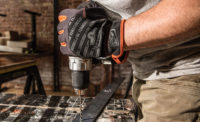By Hongwei Hsiao, PhD
When your safety and your life depend on it, you need your equipment to fit properly. This is especially true in the workplace. Improper fit may prevent workers from performing their job duties safely and effectively. If your respirator does not seal properly to your face, if your gloves are too big, if your seatbelt cannot buckle with your safety gear on . . . you get the picture.
Anthropometry is the science of defining human body dimensions and physical characteristics. The National Institute for Occupational Safety and Health (NIOSH) conducts anthropometric research to prevent work-related injuries and deaths by studying how work spaces and equipment fit today’s diverse worker population. This includes the fit of machines, vehicles, and personal protective equipment (PPE). Much of the available data were collected in the 1950s and 1970s from military personnel and the general population from that era. These decades-old data do not represent, on average and collectively, the sizes and body types of today’s workers, who are much more diverse in age, gender, and ethnicity. NIOSH research has shown workers have unique shapes and sizes for specific occupations.
Firefighters
Approximately 1.1 million firefighters risk their lives protecting the public in the U.S.1 On average, 90 to 100 firefighters die in the line of duty each year.1 In 2013, firefighters suffered approximately 65,880, injuries. 2 Firefighters rely heavily on fire apparatus (i.e., vehicle) and personal protective equipment (PPE; i.e., bunker gear) to help protect them.
In 2006, the National Fallen Firefighters Foundation reported the need to consider firefighter body size and shape information when designing fire apparatus and PPE. A group of firefighter associations and fire apparatus manufacturers proposed a survey of U.S. firefighters to address fire-apparatus design issues and to update the National Fire Protection Association (NFPA) standards for apparatus and PPE. In response, NIOSH collaborated with the firefighter community, firefighter apparatus manufacturers, and the NFPA standards committee to plan and conduct a national survey on firefighter anthropometry during 2008-2012.
NIOSH collected anthropometry data from 951 firefighters in four U.S. regions (Rockville, MD; Philadelphia, PA; Phoenix, AZ; and Fort Worth, TX). As part of this study, 71 anthropometric dimensions were measured. The data obtained in this study provide the first available U.S. national firefighter anthropometric information for fire apparatus and firefighter PPE designs.
NIOSH produced a database that was shared with 17 firefighter associations and firefighter apparatus manufacturers to begin updating their designs of seat belts, fire truck cabs, gloves, boots, seats, self-contained breathing apparatus carrying straps, and protective clothing. NIOSH also developed and tested a series of design procedures, which provide the basis for equipment designers, standards writers, and industry manufacturers to use and improve PPE design and efficacy. Findings revealed that changes to fire apparatus and PPE sizing are needed to accommodate today’s firefighters.
Previous research has demonstrated that some firefighters are not physically able to buckle their seatbelt in emergency vehicles when in turnout gear. As a result, a fire department in a very large metropolitan area retrofitted older fire apparatus with new seatbelt systems based on the NIOSH data. The NIOSH national firefighter anthropometry data, along with the robust partnerships established throughout this effort, contributed to an NFPA standards update on seatbelt specifications, which resulted in science-based modifications to seatbelt length, configuration, and retracting systems.3 This standard guides manufacturers in their design process and fire departments in their purchase requirements. The improved fire apparatus and PPE designs will better fit future firefighters and help protect them against injuries and hazardous exposures.
Truck drivers
In 2009, truck drivers experienced 16.8% of all transportation-related fatalities and 2% of the nonfatal injuries requiring days away from work, even though they only...Click here to read the rest of the blog post.


